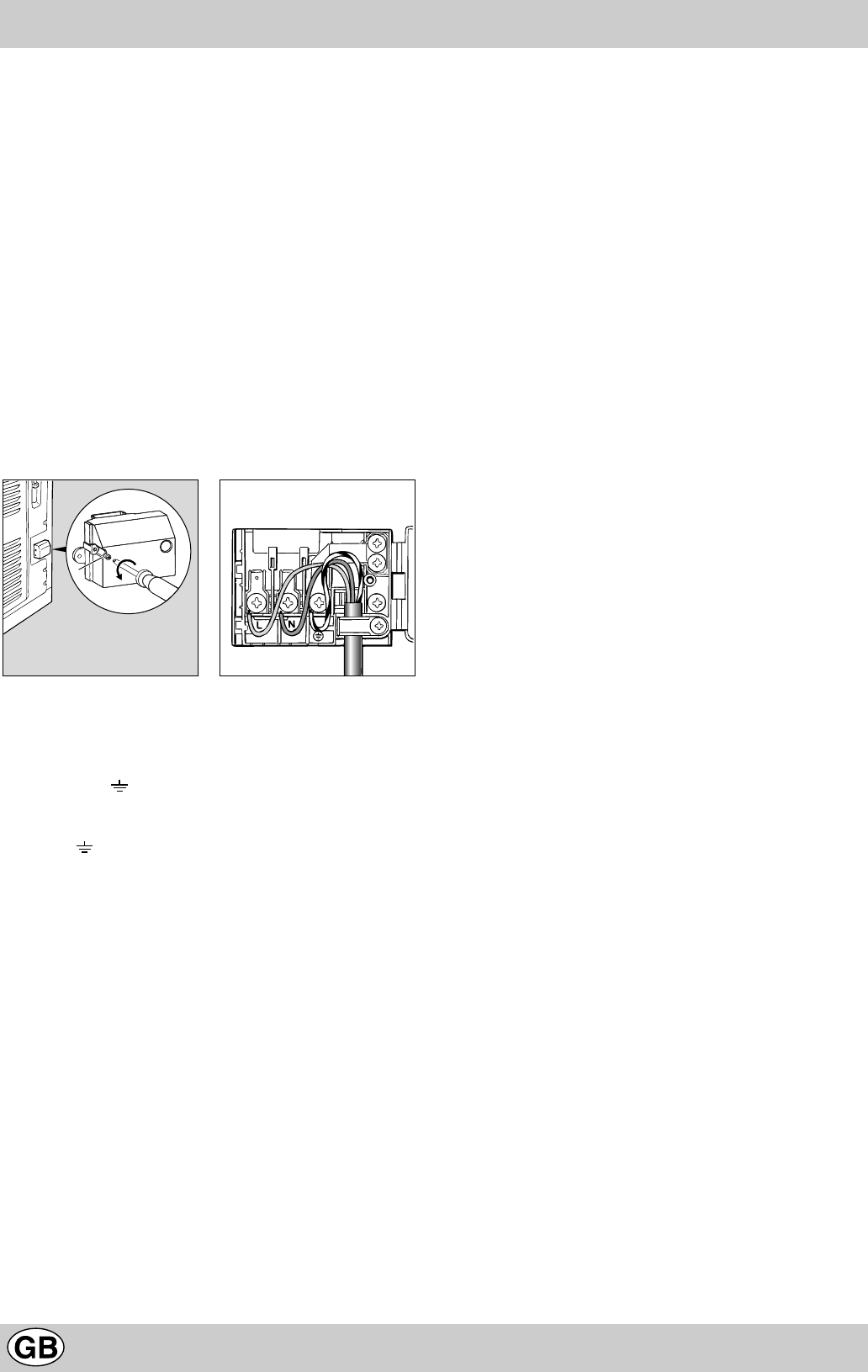
20
The panels of the adjacent cabinets must be made of
heat-resistant material. In particular, cabinets with a veneer
exterior must be assembled with glues which can withstand
temperatures of up to 100°C.
In compliance with current safety standards, contact with
the electrical parts of the oven must not be possible once
it has been installed.
All parts which ensure the safe operation of the appliance
must be removable only with the aid of a tool.
Electrical Connection
Those ovens equipped with a three-pole power supply cord
are designed to operate with an alternating current with
the voltage and frequency indicated on the data plate
(located on the appliance) and in the instruction manual.
The wire for grounding the appliance is yellow-green in
colour.
Mounting a Power Supply Cable
Opening the terminal board:
V
• Remove the "V" screw;
• Pull open the cover of the terminal board.
To install the cable, proceed as follows:
• Remove the wire clamp screw and the three contact
screws L-N-
• Fasten the wires beneath the screwheads using the
following colour scheme : Blue (N) Brown (L) Yellow-
Green
• Fasten the suppy cable in place with the clamp, close the
cover of the terminal box and fasten it with the "V" screw.
Attaching the Power Supply Cable to the Mains
The appliance must be connected directly to the mains by
means of an omnipolar switch with a minimum contact
break of 3 mm, sized for the load and in compliance with
the current safety standards (the earthing wire must not
be interrupted by the switch).
The power supply cord must be positioned so that it does
not reach a temperature 50°C above room temperature
at any one point along its length.
Before making the connection, check that:
• the fuse and the electrical system in the home can
handle the load of the appliance (see the data plate);
• the electrical mains in the home is equipped with an
efficient grounding system in compliance with the
current safety standards;
• The electrical outlet or omnipolar switch is within easy
reach when the oven is installed.
NB: Do not use adaptors, shunts or reducing devices as
they may cause overheating and lead to fires.













